One of the big selling points of Microsoft’s new Surface Book laptop is that it offers an optional Nvidia graphics card in higher-end models. With a distinct lack of game-ready graphics hardware in most 13-inch laptops, that immediately caught the attention of PC gamers.
Of course, there were some caveats. First, the graphics hardware from Nvidia was installed in the system’s keyboard base, meaning it couldn’t be used when the screen was detached as a standalone tablet. In fact, if you try and detach the screen while the GPU is being used, you get a pop-up message telling you to close the offending application before the latch connecting the screen and base will release.
Second, Microsoft and Nvidia were both very nonspecific about exactly what type of graphics hardware was in the system. Microsoft called it a custom chip, while Nvidia claimed it was so different from anything else the company made, you simply could not compare it to any of its current lineup of mobile graphics hardware.
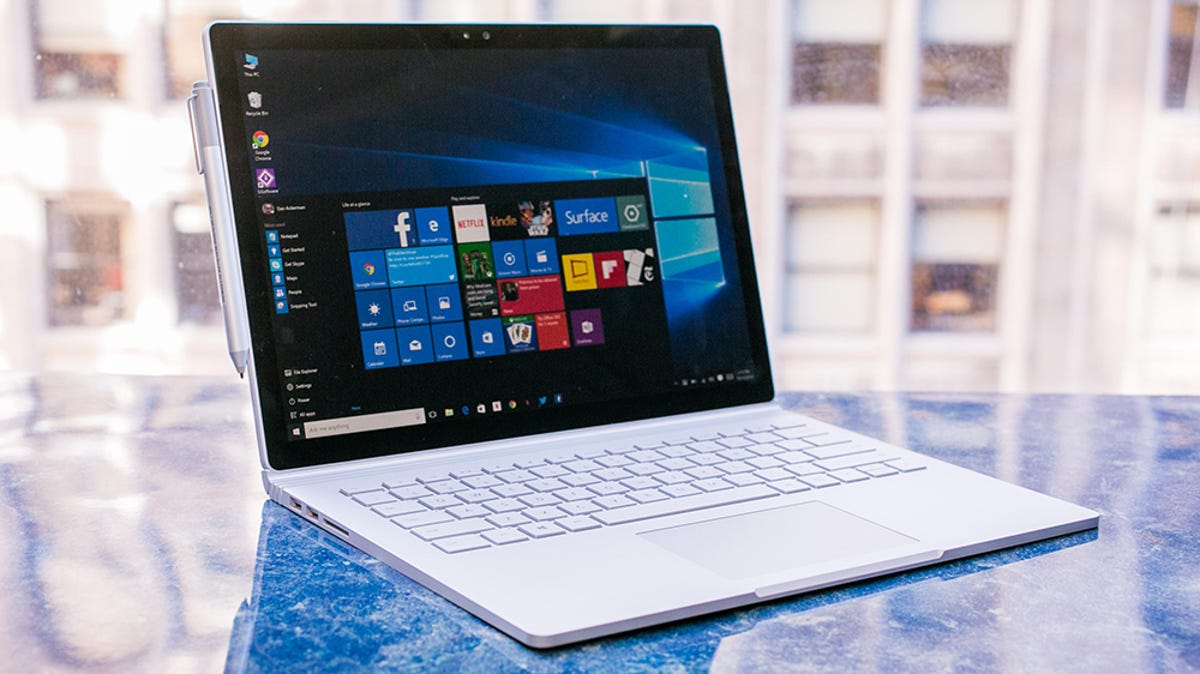

Sarah Tew/CNET
That’s not the first time we’ve heard this line. The Dell-made Alienware Alpha and Alienware Steam Machine also use a custom Nvidia GPU, but that’s one we’ve since learned is close in capabilities to the very mainstream Nvidia GeForce 860M GPU. It’s not top-of-the-line, but certainly good enough for playing any current game at full HD 1,920×1,080-pixel resolution at medium-to-high settings (there’s now a newer version called the GeForce 960M).
Something similar to the GeForce 860M/960M would make the Surface Book a legitimate gaming contender. But based on what we’ve been able to see of the internal specs, the Nvidia hardware inside the Surface Book is actually closer to the entry-level Nvidia 940M GPU, which is not nearly as capable. To be fair, Microsoft never pitched this as a gaming powerhouse, but let’s just say everyone involved was as vague as humanly possible, even though the GPU-enabled configurations started at $1,899 in the US (a $1,699 configuration with the Nvidia GPU was added later), which is about what you’d expect to pay for a decent gaming laptop.
But even knowing all this, many of the reader questions we’ve received about the Surface Book have been about its gaming capabilities. While we did some basic game benchmarking and testing in our full review of the Surface Book , it’s a topic of such interest that it’s worth a deeper dive, with real-world examples on how the system works with different games.
For this series of tests, we’re using a high-end Surface Book configuration, with a Core i7 CPU, 16GB of RAM, a 512GB SSD and the optional Nvidia custom GPU.
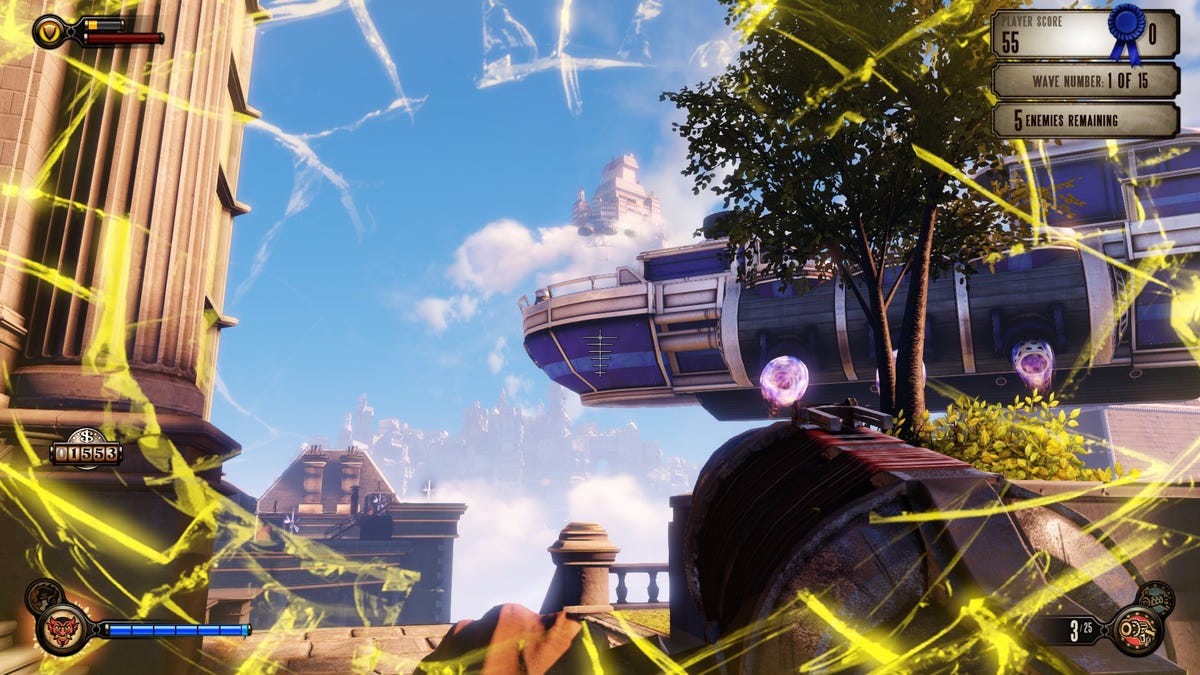

BioShock Infinite
This is a great middle-of-the-road game that still looks good, but isn’t too demanding on mainstream hardware. The test we normally run, at 1,920×1,080-pixel resolution and very high detail settings, led to a poor frame rate of 23.5 frames per second, which we would not consider playable. Keeping the resolution the same but knocking the settings down to medium, the in-game benchmarking tool reported 37.2 frames per second, which is certainly playable, if not great. In hands-on testing, the game worked well enough, even if it’s not the smooth experience we’ve come to expect from even midrange gaming laptops.
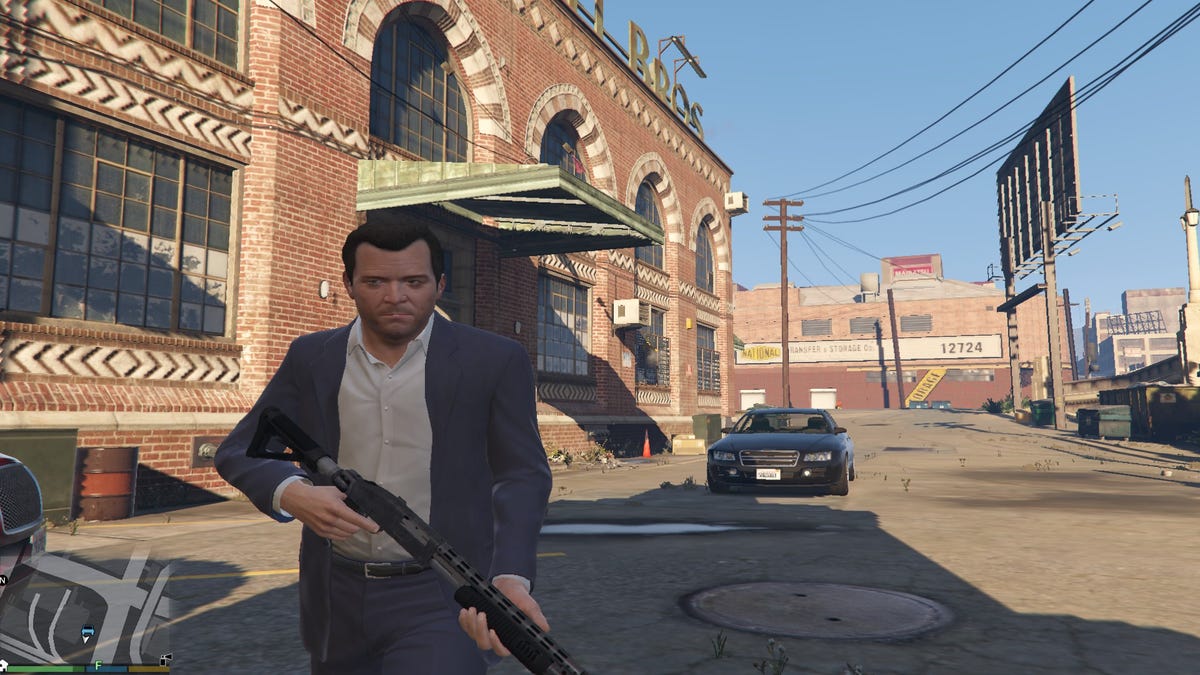

Grand Theft Auto V
A console hit from a couple of years ago that got a major facelift for its 2015 PC release, Grand Theft Auto V was a very pleasant surprise on the Surface Book. We kept the resolution at a reasonable 1,920×1,080 pixels (not a perfect match for the 3:2 aspect ratio display, but it’s an understandable baseline), and turned every graphics setting down to its lowest setting (usually defined as “normal”).
The in-game settings menu helpfully shows you how much of the GPU’s internal memory the currently selected options would use, and even with these very modest settings, it showed us at 1,066MB, slightly over the 1,023MB listed as available from the 1GB Nvidia GPU. Worrisome, but once we launched into the actual game, it looked and played great, even when driving around the crowded streets of Los Santos.
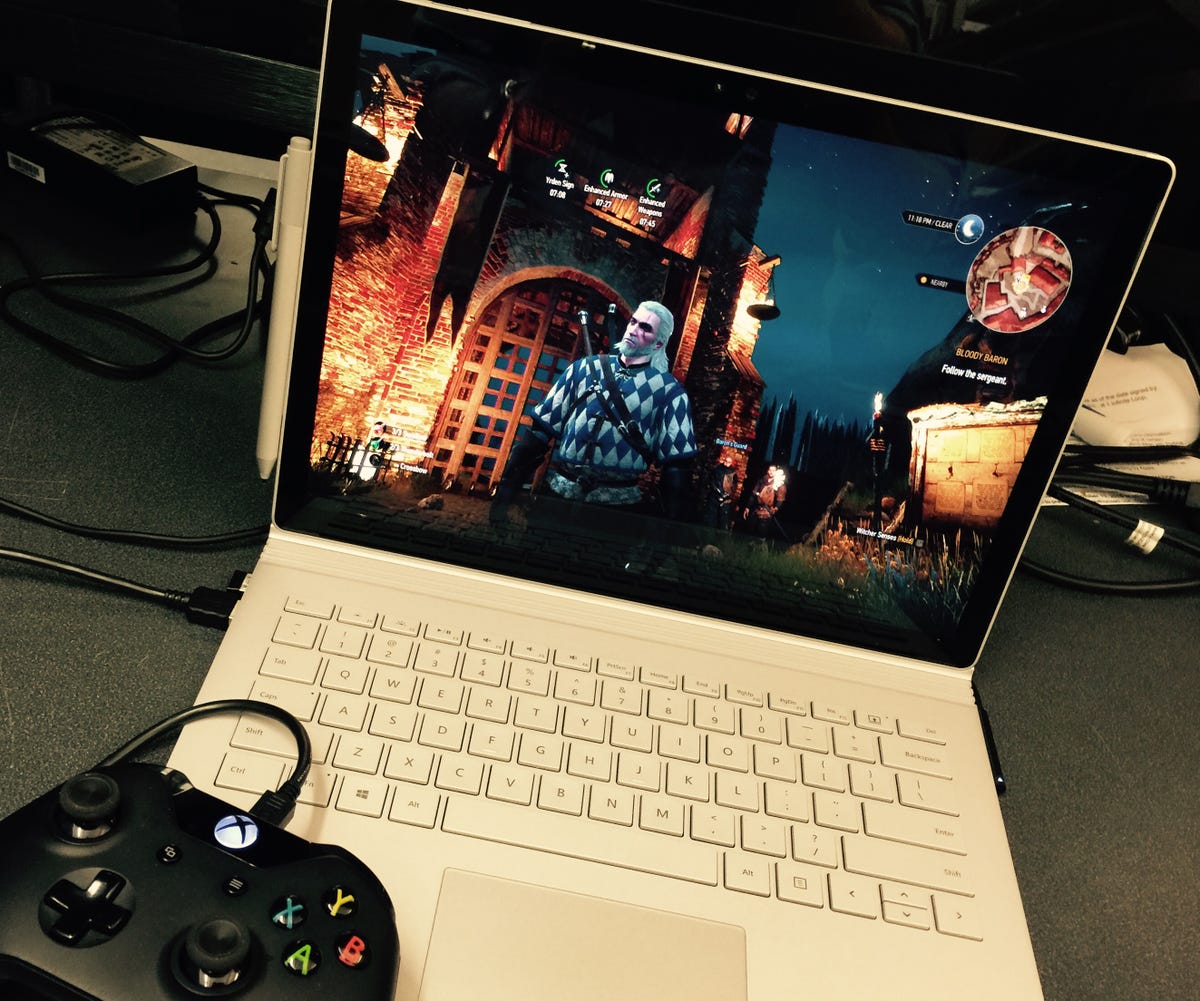

Dan Ackerman/CNET
The Witcher 3
This series has always represented PC gaming graphics at their most impressive, but it also means running the latest Witcher game was not a task for the faint of heart, or at least those with older hardware. On a high-end gaming desktop or laptop with, for example, an Nvidia GeForce GTX 980 or 980M card, the game runs beautifully, with many of the visual options turned up to high. On a more mainstream gaming laptop, with the very common Nvidia GeForce 860M card, the game runs fine at 1,920×1,080 pixels, with most graphics settings at medium, and the same goes for the Alienware Alpha, another system with a custom Nvidia GPU (but one is very similar to the 860M).
On the Surface Book, this game represented a serious challenge. The native 3,000×2,000-pixel resolution was not going to cut it, so I dropped the in-game resolution down to 1,680×1,050 to keep it close to the native 3:2 aspect ratio. Things were still way too choppy, so I dropped nearly every in-game graphics setting down to low or medium (and turned optional items such as Nvidia Hairworks to “off”), and went into the separate post-processing menu and set it to low. After all that, the game was much smoother, but it’s a shame to miss out on so many of the visual bells and whistles that really make it so much fun to play.
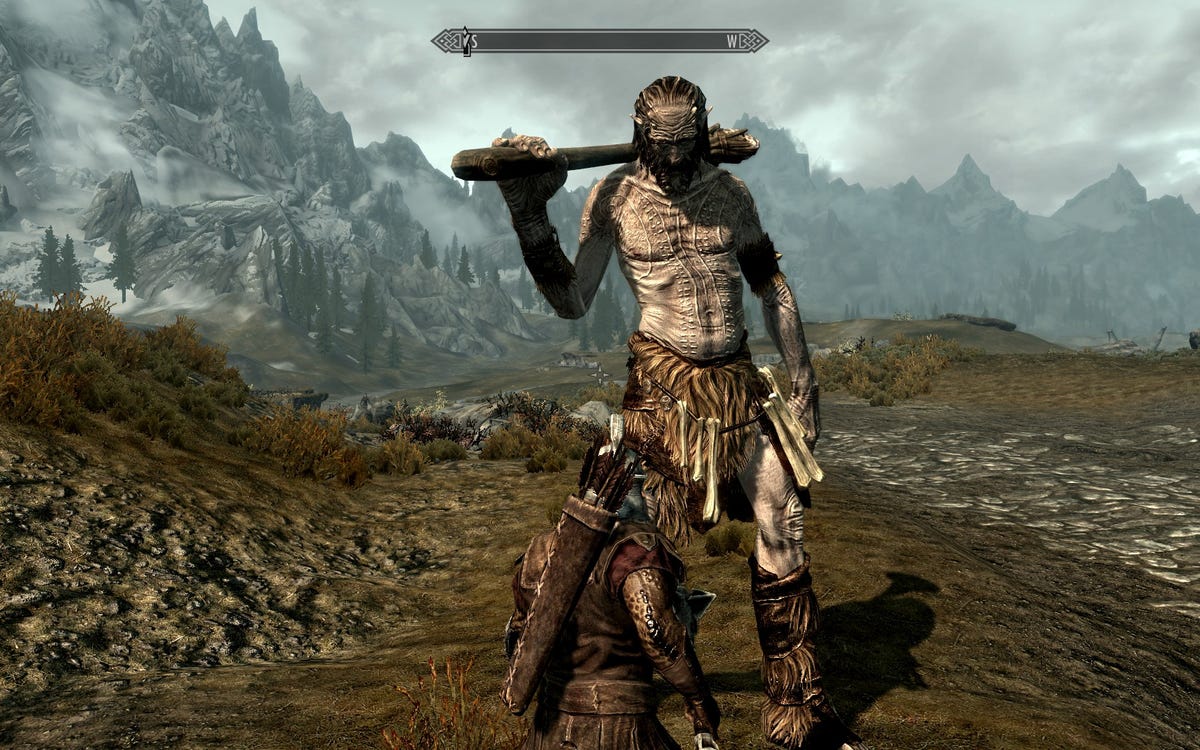

Skyrim
Thanks to a robust modding community that is still developing new content for this 2011 open-world sword-and-sorcery hit, Skyrim continues to be popular with gamers. It’s a little older, so even PCs with modest graphics capabilities should be able to run it.
The game auto-detected our hardware as well as it could (seeing the graphics hardware as a generic “Nvidia GeForce GPU”), and suggested the preset for high detail levels. Feeling ambitious, I paired that with a high 2,560×1,600-pixel resolution.
That might have been a little too ambitious. It loaded up fine and even looked good, especially considering the wide-open outdoor vistas that require the game to draw scenery going off miles into the distance, but when actually moving through the game world, it felt just sluggish and choppy enough to be annoying.
Keeping the detail levels at high, I dialed the resolution back to 1,680×1,050, and it moved like butter. You could also swap lower detail settings for a higher resolution — it’s a matter of taste. Skyrim is a great example of a game well-suited for the Surface Book — slightly older, but modern-feeling, with a wide variety of in-game graphics settings options.
Approved for gaming, with reservations
In the course of our experiments, we got almost every game we tried to work at least passingly well, although for more advanced games, such as The Witcher 3, this is not going to be an optimal experience.
Some games, both older and newer ones, were not quite sure what to do with the Surface Book’s very high 3,000×2,000-pixel resolution, and startup screens could appear in small windows at their actual default size, rather than scaled for optimal viewing. This could usually be fixed in the game’s settings menu, but it made some initial navigation difficult.
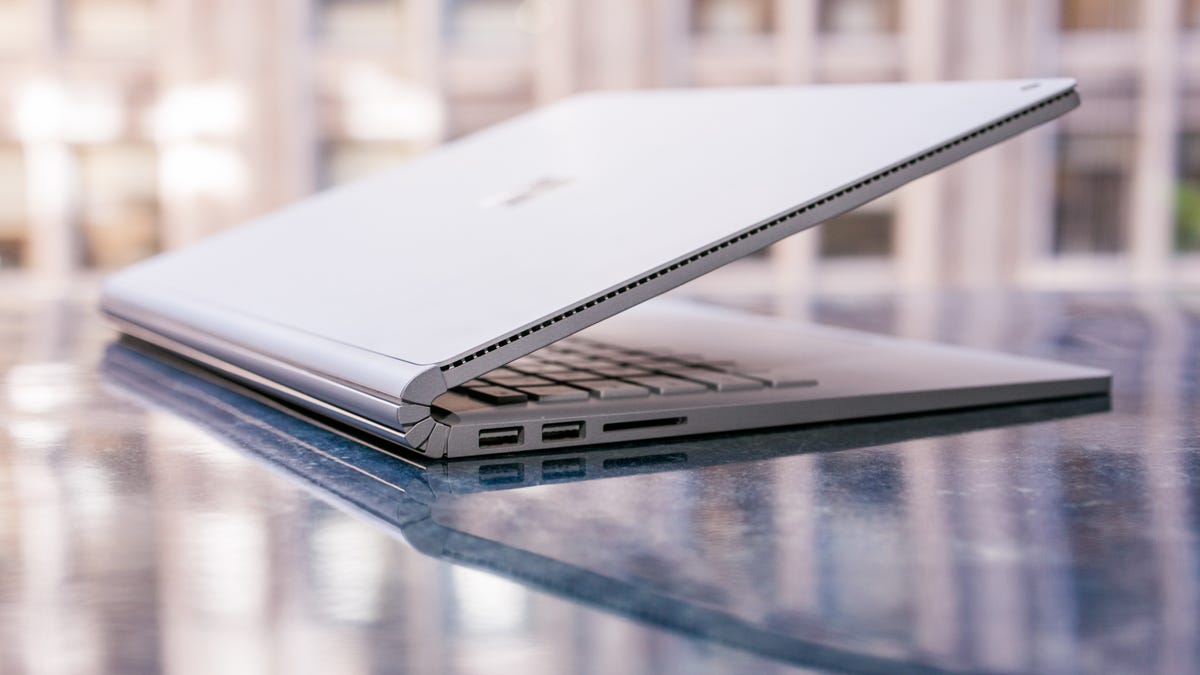

Sarah Tew/CNET
For example, Wolfenstein: The Old Blood, a 2015 first-person shooter, ended up locked to the 3,000×2,000-pixel native resolution and wouldn’t allow changes from the settings menu (I’m sure there’s a config file somewhere in the program folder one could manually tweak with a text editor). The brand-new Sword Coast Legends, a Dungeons & Dragons role-playing game, initially booted to an account signup and log-in screen that didn’t scale properly, with no way to get to the in-game settings until you navigated past that. But, that initial splash page was rendered so small on the high-resolution screen as to be practically unreadable.
Still, problems like that were the exception, rather than the rule. For casual on-the-go gaming, the Surface Book works better than I feared, but also not as well as I had hoped after its initial announcement. I would not recommend buying the Surface Book specifically as a gaming machine, but if you invest in one as a powerful new 13-inch premium laptop, both its gaming abilities and part-time hybrid design are valuable extra features to have.




